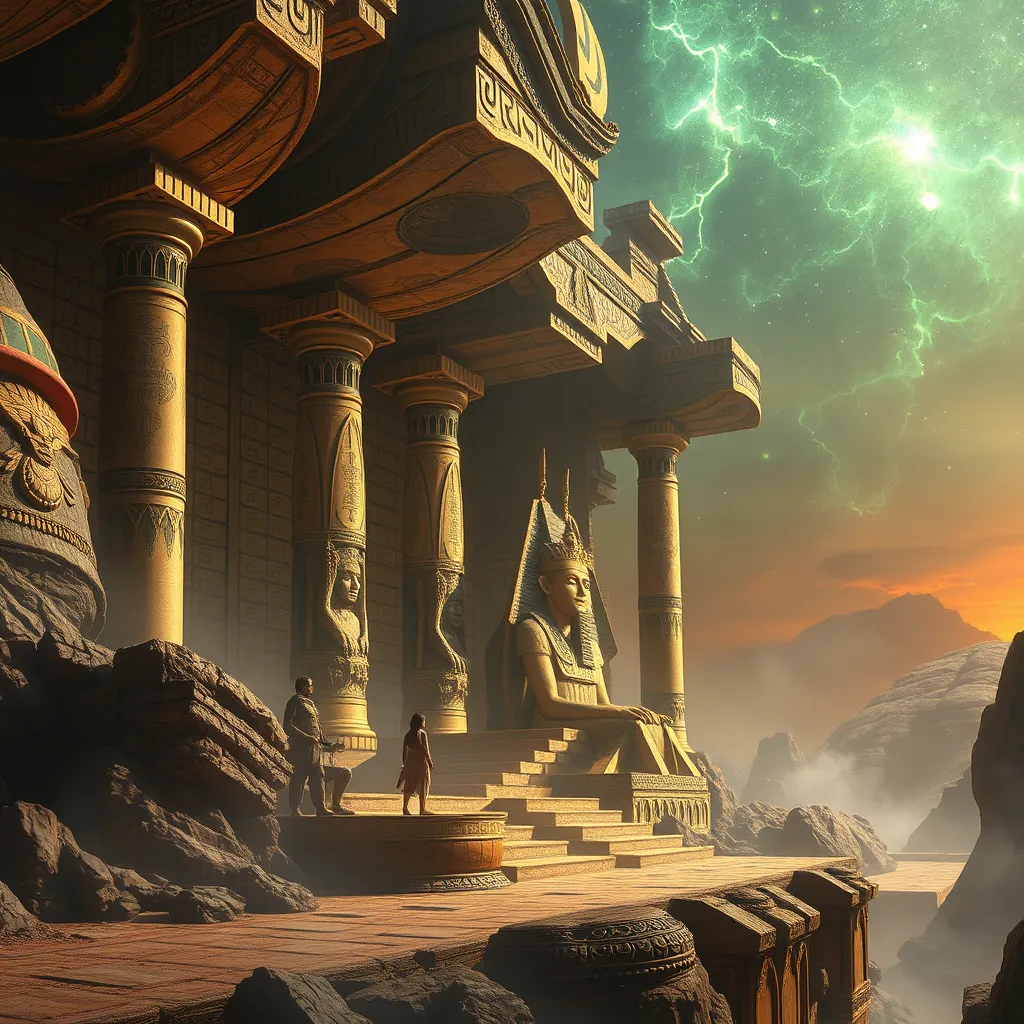The Duat: The Realm of Geb
I. Introduction
The Duat, often referred to as the underworld in ancient Egyptian beliefs, is a complex and multifaceted realm where the souls of the deceased journey after death. It is a place of trials and transformation, governed by the laws of Ma’at and inhabited by various deities, including Geb, the Earth god. Geb plays a crucial role in Egyptian mythology, particularly in the context of creation and the afterlife. This article aims to explore the significance of the Duat and Geb, examining their relationships and representations in ancient Egyptian culture.
II. The Mythological Significance of Geb
Geb holds a prominent position in Egyptian mythology as the god of the earth. His significance is rooted in various aspects:
- Geb as the Earth God: Geb is often depicted lying on the ground, with his body covered in green vegetation, symbolizing fertility and life. He is associated with the earth’s bounty and stability.
- Relationship between Geb and Nut: Geb’s counterpart, Nut, is the sky goddess. Their relationship is one of profound cosmic importance, as Geb and Nut are often depicted as embracing, with Nut arching over Geb, creating the world. This dynamic emphasizes the balance between earth and sky.
- Role of Geb in Creation Myths: In creation myths, Geb is born from the primordial waters of Nu and plays a vital role in separating the earth from the sky. This separation allowed life to flourish on earth and established the foundations of existence.
III. Understanding the Duat
The Duat is a realm that encompasses the journey of the deceased and the afterlife experience. Understanding its characteristics is essential to grasp its importance in ancient Egyptian beliefs:
- Definition and Characteristics of the Duat: The Duat is often described as a dark, mystical underworld filled with challenges and dangers. It is a place where souls undergo judgment and transformation.
- The Duat as a Realm of the Dead: The Duat serves as a resting place for the souls of the departed, where they must navigate various trials before reaching their final destination.
- Symbolism and Interpretations of the Duat in Ancient Egypt: The Duat is rich in symbolism, representing not only the afterlife but also the cyclical nature of life, death, and rebirth. It signifies the journey toward immortality and the quest for eternal life.
IV. The Journey Through the Duat
The journey through the Duat is a significant aspect of ancient Egyptian beliefs concerning death and the afterlife:
- The Process of Death and the Afterlife: Upon death, the soul embarks on a journey through the Duat, facing obstacles and challenges that test their worthiness and knowledge of the divine.
- Key Deities and Spirits Encountered in the Duat: During this journey, the deceased encounters various deities such as Anubis, the god of embalming, and Osiris, the god of the afterlife, who guide and judge souls.
- Rituals and Practices for Navigating the Duat: Ancient Egyptians performed numerous rituals, including mummification and burial practices, to prepare the deceased for their journey through the Duat and ensure their safe passage.
V. Geb’s Influence on the Duat
Geb’s influence extends into the realm of the Duat, impacting the afterlife experience and the judgment of souls:
- Geb’s Role in the Afterlife and the Judgment of Souls: As the earth god, Geb is sometimes depicted as a judge of the deceased, determining their fate based on their earthly deeds.
- Representations of Geb in Duat Imagery: Artistic depictions often portray Geb in the context of the Duat, emphasizing his role as a nurturing force that provides the foundation for the soul’s journey.
- Connections Between Geb and the Underworld: The connection between Geb and the underworld is symbolized by his association with fertility and rebirth, representing the cycle of life that persists even in death.
VI. The Duat in Egyptian Texts and Art
The Duat and Geb are frequently referenced in ancient Egyptian texts and artistic representations:
- References to the Duat in the Pyramid Texts and Coffin Texts: These sacred texts provide insights into the beliefs surrounding the Duat, detailing the challenges faced by souls and the rituals required for a successful journey.
- Artistic Depictions of the Duat and Geb: Wall paintings and carvings often illustrate the Duat’s landscapes, filled with deities and symbols, including representations of Geb as part of the afterlife narrative.
- Archaeological Discoveries Related to the Duat: Excavations of tombs and burial sites have revealed artifacts and inscriptions that highlight the importance of the Duat in ancient Egyptian culture.
VII. Modern Interpretations and Cultural Impact
The legacy of the Duat and Geb continues to influence contemporary culture and spirituality:
- The Duat in Contemporary Literature and Media: Modern authors and filmmakers draw inspiration from the imagery and themes associated with the Duat, reinterpreting them in new narratives.
- Influence of Ancient Egyptian Beliefs on Modern Spirituality: Many modern spiritual practices incorporate elements of ancient Egyptian beliefs, reflecting a continued interest in the symbolism of the afterlife.
- Ongoing Research and Discoveries in Egyptology: Egyptologists continue to uncover new findings that shed light on the significance of the Duat and its role in shaping ancient Egyptian beliefs.
VIII. Conclusion
In summary, the Duat serves as a profound and complex representation of the afterlife in ancient Egyptian beliefs, intricately linked to the figure of Geb, the earth god. Their relationship highlights the importance of understanding life, death, and rebirth. The legacy of these beliefs continues to resonate in contemporary culture, inspiring new interpretations and ongoing exploration in the field of Egyptology. Geb and the Duat remain vital components in the rich tapestry of Egyptian mythology, providing valuable insights into their understanding of existence and the afterlife.




